CAR T-Cells Demonstrate Efficacy, Tolerability in Early-Relapsed DLBCL
During a Case-Based Roundtable® event, Natalie Galanina, MD, discussed data from the ZUMA-7 and TRANSFORM trials in the first article of a 2-part series.
Natalie Galanina, MD
Associate Professor of Medicine, Malignant Hematology and Medical Oncology
University of Pittsburgh School of Medicine
Physician
UPMC Hillman Cancer Center
Pittsburgh, PA

Targeted Oncology: What do the NCCN guidelines recommend for treating patients with relapsed/refractory diffuse large B-cell lymphoma (DLBCL)?
Natalie Galanina, MD: In terms of the DLBCL guidelines, they have been updated. We now use chimeric antigen receptor [CAR] T-cell therapy in the second-line setting.1 You can use either axicabtagene ciloleucel [axi-cel; Yescarta] or lisocabtagene maraleucel [liso-cel; Breyanzi]; I think that they have pretty much equivalent efficacy.
For bridging therapy, my personal preference for patients with refractory disease is to not use chemotherapy alone or try to incorporate a biologic agent to mitigate toxicity and not have to rely on chemotherapy as much in the outcomes for bridging therapy.
A study was presented at the 2023 American Society of Hematology Annual Meeting & Exposition, and patients who received [bridging therapy with] chemotherapy plus anti-CD20 antibodies were the vast majority, 58%.2 Some [13%] received chemotherapy without CD20 agents like obinutuzumab [Gazyva] or rituximab [Rituxan], and [23%] received bridging therapies that did not contain any chemotherapy, [or] radiation, which is used more rarely [in 10%]. I don't think there's a specific winner in terms of what is used. As far as the bridging is concerned, I think it just [depends on] the patient's tolerability and whether the progression of their disease is rapid or not, and the disease bulk. Those are the factors that I look at before determining what sort of bridging to give.
The impact of prior therapies on CAR T-cell therapy is still up in the air, and in terms of what specific regimen, I don't think there's a single regimen that is recommended. There are some data to say that patients who are exposed to bendamustine, which is an alkylator, prior to the collection can compromise their yield. We did use bendamustine during the time when there was a fludarabine shortage. I personally did not see that in our patient population, but maybe our experience was very limited…I think the bendamustine does have significant lymphodepletion, which can compromise the quality of the CAR T. The other bridging therapies, such as tafasitamab [Monjuvi] or loncastuximab [Zynlonta]—their impact has been unclear, but I think it's safe to give in terms of not compromising yield for apheresis. Bispecifics, in my experience, do not affect the efficacy of CAR T. In fact, I have used glofitamab [Columvi] as single agent prior to CAR T.
What data support the use of axi-cel in the second line?
The ZUMA-7 study [NCT03391466] led to the approval of axi-cel in DLBCL. This study had approximately 360 patients. These were early relapses within the first 12 months following 1 line of therapy. These patients were randomly assigned to either receive axi-cel vs [what was], at that time, standard-of-care [SOC] chemotherapy, with similar patient characteristics. Patients in the SOC arm who achieved remission were then allowed to proceed to autologous stem cell transplant [ASCT].
The outcomes significantly favored the CAR T-cell therapy. In fact, not only this was true at early follow-up, but now we have 7-year follow up, and that shows clear benefit of cellular therapy in patients with early relapses for refractory disease. The median overall survival [OS] was not reached with axi-cel, whereas it was roughly 30 or so months with the SOC [HR, 0.73; 95% CI, 0.54-0.98; stratified P = .03].3 I think that solidified our current approach that we use cellular therapy in second-line setting whenever possible.
How was liso-cel investigated in the DLBCL population?
A similar study, TRANSFORM [NCT03575351], used liso-cel and had similar study design and a similar patient population. Here they included early relapses and patients with central nervous system [CNS] disease as well as triple-hit and double-hit genotype. These patients were randomly assigned to receive liso-cel vs SOC chemotherapy. The patients who achieved complete remission in the SOC arm were then allowed to proceed to ASCT. This study did allow for crossover, and they looked at the primary end point of event-free survival [EFS] as well as [key secondary end points such as] OS. Not surprisingly, we see a very similar [Kaplan-Meier] curve here; the patients receiving liso-cel did much better than those who received SOC [stratified EFS HR, 0.375; 95% CI, 0.259-0.542].4
[For those with triple-hit and double-hit lymphoma], it was similar. All of those patients…were allowed in the study, which [led to] a much great benefit to the study. It also allowed for patients with CNS involvement; often we exclude them. This was very encouraging, and these responses were durable [with a 24-month duration of response (DOR) rate of 60.5% for liso-cel vs 43.5% for SOC]. The median DOR was not reached in patients receiving liso-cel, whereas it was only 9.1 months in patients receiving standard chemotherapy [stratified HR, 0.603; 95% CI, 0.364-1.000]. Progression-free survival [HR, 0.422; 95% CI, 0.279-0.639] and OS [HR, 0.757; 95% CI, 0.481-1.191] showed a clear advantage in the liso-cel arm vs the SOC arm.
What were the adverse events (AEs) among the 2 CAR T-cell therapies?
In terms of the AEs, they were mainly cytokine release syndrome [CRS] and neurotoxicity. I think that initially, when we just had experience with axi-cel, we had noted greater incidence of CRS with axi-cel. They [reported] grade 3 CRS of only 6% [but] in my experience, it was more than that.5 The onset was within 3 days [range, 1-10] and more than half of patients [65%] required tocilizumab, and the duration of CRS was just about a week [range, 2-43 days].
These AEs are milder in patients who received liso-cel. This represents our experience with it, and the incidence of grade 3 or greater CRS was just 1%, which usually happens in about a similar timeframe, but a little bit more delayed due to the differences in costimulatory domain.6 The onset is within 5 days [range, 3-8]. Usually it resolves within 4 days [range, 2-5]. In terms of neurotoxicity, there was much greater incidence with axi-cel at 21%.5 I had a patient who had severe ICANS [immune effector cell–associated neurotoxicity syndrome] with axi-cel. The incidence usually happens around day 7 [range, 7-11]. Most of these patients already have CRS at the time of ICANS. [In the ZUMA-7] study, one-third required steroids, and the duration was [9 days; range, 4-19]. Because [grade 3 or higher] ICANS has very low frequency with liso-cel, at about 4%, we will feel comfortable.6
For AEs that were of particular interest, the incidence of infections was similar, as was hypogammaglobinemia, and [grade 3 or higher] cytopenias.5,6 We see that quite a bit with liso-cel but I do not find that that greater degree of cytopenia is associated with greater incidence of neutropenic fever or severe infections. [Grade 3 or higher] thrombocytopenia is more common with liso-cel at 37% [whereas it was 15% with axi-cel], neutropenia at 37% [with liso-cel], and anemia at 12% [with liso-cel and 30% with axi-cel] . The neutropenia is greater with axi-cel [69%]. Typically, these are self-limiting, and I have never had to intervene or administer growth factor support. Most of the time these resolve within roughly 100 days. I have had some patients who have protracted cytopenias, but they were not manifesting with any severe infection, so we watched and monitored these patients.
DISCLOSURE: Dr Galanina had no known relevant disclosures.
References:
1. NCCN. Clinical Practice Guidelines in Oncology. B-cell lymphomas, version 2.2025. Accessed February 20, 2025. https://www.nccn.org/professionals/physician_gls/pdf/b-cell.pdf
2. Cook MR, Shouval R, Perales MA, et al. Real-world evidence in the United States (US) of the impact of bridging therapy prior to axicabtagene ciloleucel (axi-cel) for the treatment of relapsed or refractory large B-cell lymphoma (R/R LBCL). Blood. 2023;142(suppl 1):103. doi:10.1182/blood-2023-175034
3. Westin JR, Oluwole OO, Kersten MJ, et al. Survival with Axicabtagene Ciloleucel in Large B-Cell Lymphoma. N Engl J Med. 2023;389(2):148-157. doi:10.1056/NEJMoa2301665
4. Kamdar MK, Solomon SR, Arnason J, et al. Lisocabtagene maraleucel (liso-cel) vs standard of care (SOC) with salvage chemotherapy (CT) followed by autologous stem cell transplantation (ASCT) as second-line (2L) treatment in patients (pt) with R/R large B-cell lymphoma (LBCL): 3-year follow-up (FU) from the randomized, phase 3 TRANSFORM study. J Clin Oncol. 2024;42(suppl 16):7013. doi:10.1200/JCO.2024.42.16_suppl.701
5. Locke FL, Miklos DB, Jacobson CA, et al. Axicabtagene Ciloleucel as Second-Line Therapy for Large B-Cell Lymphoma. N Engl J Med. 2022;386(7):640-654. doi:10.1056/NEJMoa2116133
6. Kamdar M, Solomon SR, Arnason J, et al. Lisocabtagene maraleucel versus standard of care with salvage chemotherapy followed by autologous stem cell transplantation as second-line treatment in patients with relapsed or refractory large B-cell lymphoma (TRANSFORM): results from an interim analysis of an open-label, randomised, phase 3 trial. Lancet. 2022;399(10343):2294-2308. doi:10.1016/S0140-6736(22)00662-6








